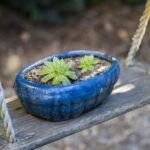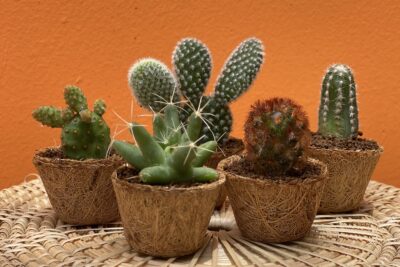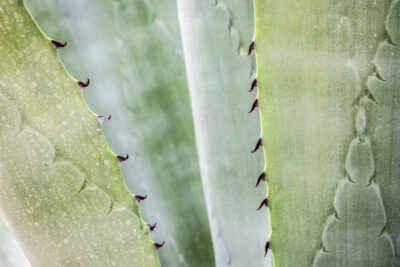
Is It Normal for My Succulent to Have an Unusual Growth?

Succulents have become incredibly popular houseplants due to their unique shapes and colors, as well as their reputation for being low-maintenance. These plants have the ability to store water in their leaves, stems, or roots, which allows them to survive in dry conditions. However, despite their resilient nature, succulents can sometimes exhibit unusual growth patterns that leave their owners wondering if something is wrong.
We will explore some of the common reasons why succulents may have unusual growth and whether or not it is normal. We will discuss factors such as lighting, watering, temperature, and pests that can affect the growth of succulents. Additionally, we will provide tips on how to address these issues and ensure that your succulents are thriving and healthy. So, if you have noticed any strange growth patterns in your succulent plants, read on to learn more about what might be causing it and how to fix it.
- Yes, it is normal for succulents to have unusual growth patterns
- Unusual growth can be a sign of the succulent adapting to its environment
- Some succulents naturally have unique shapes and forms
- Unusual growth can also be caused by factors such as light, water, or temperature changes
- As long as the succulent is healthy and thriving, unusual growth is nothing to worry about
- If you are concerned about the unusual growth, consult a plant expert for advice
- Providing the succulent with proper care and conditions can help promote normal growth
- Frequently Asked Questions
Yes, it is normal for succulents to have unusual growth patterns
Succulents are known for their unique and intriguing growth patterns, which can often appear unusual or unexpected to the untrained eye. While some succulent enthusiasts may worry about these unconventional growth habits, it is important to understand that they are actually quite normal and even desirable in many cases.
One common example of unusual growth in succulents is etiolation. Etiolation occurs when a succulent does not receive enough sunlight and starts to stretch out and become elongated in an attempt to reach for more light. This can result in a leggy or spindly appearance, with leaves spaced farther apart than usual. While etiolation is not ideal for the overall health and appearance of the plant, it is a natural response to low light conditions and can be easily corrected by providing the succulent with more sunlight.
Another type of unusual growth in succulents is the production of offsets or "pups". Offsets are miniature versions of the parent plant that grow from the base or sides of the main plant. This is a common reproductive strategy for many succulents, allowing them to propagate and produce new plants. While the appearance of these offsets may seem strange or unexpected, they are actually a sign of a healthy and thriving succulent.
Additionally, some succulents may exhibit peculiar leaf shapes or colors. This can be attributed to various factors such as genetics, environmental conditions, or even pests. For example, certain succulents may develop red or purple hues in their leaves when exposed to intense sunlight, while others may have variegated patterns or unique leaf shapes as a result of natural mutations.
 Can Succulents Die from Overwatering and Lack of Sunlight?
Can Succulents Die from Overwatering and Lack of Sunlight?It is perfectly normal for succulents to display unusual growth patterns. These unique characteristics add to the charm and diversity of succulent plants. By understanding the reasons behind these growth habits and providing the necessary care, succulent enthusiasts can ensure the health and vitality of their plants while appreciating the beauty of their unconventional growth.
Unusual growth can be a sign of the succulent adapting to its environment
When it comes to succulents, their unique and diverse growth patterns are part of what makes them so fascinating. However, sometimes you may notice that your succulent is exhibiting an unusual growth that leaves you wondering if something is wrong. The good news is that in most cases, an unusual growth is actually a sign that your succulent is perfectly healthy and adapting to its environment.
One common type of unusual growth is known as "etiolation." This occurs when a succulent doesn't receive enough sunlight and starts to stretch out in search of more light. The stem becomes elongated and the leaves may appear spaced out. While etiolation is not ideal for the succulent's overall health, it can be easily corrected by providing it with more sunlight.
Another type of unusual growth is called "propagation." This happens when a succulent produces "pups" or offshoots, which are tiny versions of the parent plant. This is a natural process for many succulents and is often a sign of a healthy plant. You can separate these pups from the parent plant and propagate them to grow a new succulent.
Other factors that can contribute to unusual growth
In some cases, unusual growth can also be influenced by other factors such as watering, temperature, and nutrient levels. Overwatering, for example, can cause the succulent's roots to rot and lead to abnormal growth. It's important to find the right balance and water your succulent only when the soil is completely dry.
Extreme temperatures can also affect the growth of succulents. If your succulent is exposed to very high or low temperatures, it may start to show signs of stress, such as stunted growth or discoloration. It's best to keep your succulent in a temperature-controlled environment to ensure optimal growth.
 Trimming Succulents: Can I Safely Prune the Top of an Overgrown Plant?
Trimming Succulents: Can I Safely Prune the Top of an Overgrown Plant?Nutrient deficiency or excess can also result in unusual growth. For instance, if your succulent is lacking essential nutrients like nitrogen or magnesium, it may exhibit stunted growth or develop yellow leaves. On the other hand, excessive fertilization can lead to overgrowth and weak stems. It's crucial to provide your succulent with a well-balanced fertilizer specifically formulated for succulents.
In most cases, an unusual growth in your succulent is a natural response to its environment. By understanding the different factors that can contribute to this type of growth, you can ensure that your succulent remains healthy and thriving. Remember to provide adequate sunlight, water sparingly, control temperature, and maintain a proper nutrient balance to promote optimal growth in your succulent.
Some succulents naturally have unique shapes and forms
When it comes to succulents, it is not uncommon to come across plants with unusual or unique growth patterns. In fact, many succulents naturally have distinct shapes and forms that add to their charm and appeal.
1. Rosette Formations:
One common growth pattern seen in succulents is the rosette formation. This refers to a circular arrangement of leaves that radiate from a central point. Succulents like Echeveria, Sempervivum, and Crassula are known for their rosette-shaped growth habit. These plants often produce offsets or "pups" that grow around the base, creating a visually striking cluster.
2. Architectural Growth:
 Can Succulents Survive a Freeze Unprotected?
Can Succulents Survive a Freeze Unprotected?Some succulents exhibit architectural growth, with their leaves or stems growing in unusual angles or patterns. For example, the String of Pearls (Senecio rowleyanus) features long, trailing stems adorned with small, round leaves that resemble pearls. Another example is the Crassula Buddha's Temple, which develops stacked, triangular leaves that resemble a miniature pagoda.
3. Columnar Growth:
Other succulents, such as the Euphorbia trigona (African Milk Tree), display columnar growth. These plants have tall, upright stems that resemble columns or cacti. Their unique shape adds vertical interest to any garden or indoor space.
4. Monstrous or Crested Forms:
Occasionally, succulents can develop monstrous or crested forms, also known as fasciation. This occurs when the plant's growing point is damaged or mutated, resulting in abnormal growth patterns. Monstrous forms can feature exaggerated growth, unusual textures, or distorted shapes. Some popular examples include the Crested Euphorbia lactea and the Monstrose Cactus (Cereus peruvianus).
5. Variegation:
Variegation refers to the presence of different colored patterns or markings on a plant's leaves or stems. Some succulents naturally exhibit variegation, which can range from subtle stripes to bold contrasting colors. Varieties like the Variegated Agave and Variegated Aloe vera are highly sought after for their unique and eye-catching appearance.
 Protecting Succulents: Tips for Cold Weather Survival
Protecting Succulents: Tips for Cold Weather SurvivalConclusion:
So, if you notice your succulent has an unusual growth pattern, don't worry! It might just be displaying one of its natural and distinctive characteristics. Embrace the uniqueness of your succulent and enjoy the beauty it brings to your collection or garden.
Unusual growth can also be caused by factors such as light, water, or temperature changes
Unusual growth in succulents can be a cause for concern for many plant enthusiasts. While succulents are known for their hardy and resilient nature, they can sometimes exhibit unusual growth patterns that may indicate an underlying issue.
One possible cause for unusual growth in succulents is insufficient light. Succulents are generally adapted to thrive in bright, indirect sunlight. When they are not provided with adequate light, they may stretch out, become leggy, or exhibit elongated stems. This is known as etiolation and is the plant's way of reaching for more light. To prevent this, it is important to place your succulent in a location where it can receive enough sunlight or provide artificial light if necessary.
On the other hand, excessive light exposure can also lead to unusual growth. Succulents that are exposed to intense, direct sunlight for prolonged periods may develop sunburn or sun damage. This can cause discoloration, bleaching, or even scarring on the plant's leaves or stems. To protect your succulent from excessive light, consider providing some shade during the hottest parts of the day or moving it to a location with filtered light.
Watering practices can also contribute to unusual growth in succulents. Overwatering, in particular, can lead to issues such as root rot or fungal infections. When succulents receive too much water, their roots may become waterlogged, and this can hinder their growth and overall health. On the other hand, underwatering can cause succulents to become dehydrated, leading to stunted growth or shriveled leaves. It is important to find the right balance and water your succulent only when the soil is completely dry.
Temperature changes can also impact the growth of succulents. Extreme temperature fluctuations, especially sudden drops in temperature, can cause stress to the plant. This can manifest as abnormal growth patterns or even damage to the leaves or stems. To prevent temperature-related issues, it is advisable to provide your succulent with a stable and suitable temperature range. Avoid exposing them to drafty areas or extreme temperature variations.
 Using Regular Miracle Gro Fertilizer: Is it Suitable for Succulents?
Using Regular Miracle Gro Fertilizer: Is it Suitable for Succulents?Unusual growth in succulents can be caused by various factors such as insufficient or excessive light, improper watering practices, or sudden temperature changes. By understanding these potential causes and making necessary adjustments, you can help your succulents thrive and maintain their normal growth patterns.
As long as the succulent is healthy and thriving, unusual growth is nothing to worry about
When it comes to succulents, it's not uncommon to see some unusual growth patterns. While some succulent owners may start to panic when their plant starts growing in a way that seems strange or abnormal, it's important to remember that succulents are highly adaptable plants that can exhibit a wide range of growth patterns.
So, is it normal for your succulent to have an unusual growth?
The short answer is yes. As long as your succulent is healthy and thriving, there's usually no cause for concern. Succulents have a unique ability to adapt to their environment, and this can sometimes result in unusual growth patterns. Whether it's a succulent growing taller than expected, sprouting new offsets, or developing strange leaf colors or shapes, these variations in growth are often just signs that your succulent is doing well.
When a succulent experiences unusual growth, it can be a fascinating and beautiful sight. It's a reminder of the incredible diversity and resilience of these plants. Each succulent has its own unique growth habit, and sometimes they surprise us with unexpected twists and turns.
Factors that can contribute to unusual growth in succulents:
- Light: Succulents are known for their ability to thrive in bright sunlight, but different levels of light exposure can affect their growth. Insufficient light may cause succulents to stretch or elongate as they reach for more sunlight, resulting in leggy or spindly growth. On the other hand, intense sunlight can sometimes cause succulents to develop unusual colors or textures.
- Watering: Overwatering or underwatering can both lead to unusual growth in succulents. If a succulent receives too much water, its leaves may become soft and mushy, and the plant can start to rot. On the other hand, underwatering can cause the leaves to shrivel up or become wrinkled, affecting the overall appearance of the plant.
- Temperature: Extreme temperatures, whether too hot or too cold, can impact the growth of succulents. Some succulents may experience stunted growth or even go dormant in response to extreme temperature fluctuations.
- Genetics: Just like humans, succulents inherit certain traits from their parent plants. These genetic factors can influence the growth patterns and characteristics of a succulent. So, if you notice unusual growth in your succulent, it could simply be a reflection of its unique genetic makeup.
Remember, every succulent is different, and what may seem unusual for one plant could be completely normal for another. As long as your succulent is healthy, continues to grow, and exhibits signs of vitality, there's usually no need to worry about its unusual growth patterns.
 Succulent Care on Wood: A Guide to Proper Maintenance
Succulent Care on Wood: A Guide to Proper MaintenanceSo, embrace the beauty of your succulent's unique growth and enjoy the surprises it brings along the way!
If you are concerned about the unusual growth, consult a plant expert for advice
If you are concerned about the unusual growth of your succulent, it is always a good idea to consult a plant expert for advice. While succulents are known for their unique and sometimes unusual growth patterns, there are certain instances where the growth may be a cause for concern.
Factors to Consider
When assessing whether the growth of your succulent is normal or not, there are several factors to consider:
- Species: Each succulent species has its own unique growth habits and patterns. What may seem unusual for one species could be perfectly normal for another.
- Age: Young succulents often go through growth spurts, where they may exhibit rapid growth or develop new leaves or stems. This is usually a normal part of their growth process.
- Environmental Conditions: The environment plays a significant role in the growth of succulents. Factors such as sunlight, temperature, humidity, and watering habits can impact their growth patterns. It is essential to provide your succulent with the optimal conditions for its specific needs.
- Root Health: The health of a succulent's roots is crucial for proper growth. If the roots are damaged or infected, it can affect the overall health of the plant and lead to unusual growth.
Signs of Concern
While succulents are generally resilient plants, there are certain signs that may indicate a problem with their growth:
- Discoloration: If you notice significant discoloration, such as yellowing or browning of leaves or stems, it could be a sign of stress or disease.
- Wilting: Succulents typically have plump and firm leaves. If you observe wilting or shriveling, it may indicate underwatering or root issues.
- Abnormal Growth: If your succulent is showing abnormal growth patterns, such as elongated stems, excessive stretching, or deformed leaves, it could be a sign of inadequate light or nutrient deficiencies.
- Pest Infestation: In some cases, unusual growth can be attributed to pests, such as mealybugs or spider mites. Look for signs of pests on the leaves or stems of your succulent.
Remember, it is always better to seek professional advice when in doubt. A plant expert or horticulturist can examine your succulent and provide guidance on whether the growth is normal or if there is an underlying issue that needs to be addressed.
Providing the succulent with proper care and conditions can help promote normal growth
When it comes to caring for succulents, it is common for plant owners to wonder if their succulent's growth is normal. Succulents are known for their unique and sometimes unusual growth patterns, which can vary from one species to another.
While some succulents may exhibit normal growth patterns, others may display unusual growth that can raise concerns. However, it is important to remember that succulents have their own ways of adapting and growing, and what may appear unusual to us might actually be completely normal for the plant.
 Reviving an Overwatered Succulent: Tips to Save Your Plant
Reviving an Overwatered Succulent: Tips to Save Your PlantFactors Affecting Succulent Growth:
Several factors can influence the growth and appearance of succulents. These factors include:
- Light: Succulents require bright, indirect sunlight to thrive. Insufficient light can lead to elongated or stretched growth, which may appear unusual. On the other hand, succulents that receive too much direct sunlight may develop a reddish or purplish hue.
- Water: Overwatering or underwatering can have a significant impact on succulent growth. Overwatering can cause root rot and lead to stunted or discolored growth. Conversely, underwatering can result in shriveled leaves and a slowed growth rate.
- Temperature: Succulents prefer warmer temperatures but can tolerate a wide range of climates. Extreme temperature fluctuations or prolonged exposure to cold temperatures can cause stress and affect growth.
- Soil and Fertilizer: Well-draining soil is essential for succulents to prevent root rot. Additionally, using the appropriate fertilizer in moderation can promote healthy growth.
Unusual Growth Patterns:
While some growth patterns may be considered unusual, they are often a result of the plant adapting to its environment or certain conditions. Here are a few examples of unusual growth patterns in succulents:
- Etoliation: This occurs when a succulent receives insufficient light and starts to stretch out in search of more sunlight. The stem becomes elongated and leaves may appear spaced out.
- Fasciation: This is a rare phenomenon where the succulent's stem becomes flattened, creating a crest-like appearance. It is believed to be caused by genetic mutations or hormonal imbalances.
- Monstrose Growth: Monstrose succulents display abnormal growth forms, often characterized by swollen, twisted, or contorted stems. These growth patterns are typically genetic mutations and can result in unique and interesting plant shapes.
It is important to note that while unusual growth patterns may not always be a cause for concern, they can sometimes indicate underlying issues such as improper care, pests, or diseases. If you notice any drastic changes in your succulent's growth or overall health, it is advisable to consult a plant expert or horticulturist for guidance.
Conclusion:
While succulents may exhibit unusual growth patterns, it is often a result of their natural adaptation to their surroundings. By providing the right care and conditions, such as proper lighting, watering, temperature, and soil, you can help promote healthier growth in your succulents. However, if you have any concerns about your succulent's growth, it is best to seek professional advice to ensure the plant's well-being.
 Succulent Care: Pruning Damaged Leaves
Succulent Care: Pruning Damaged LeavesFrequently Asked Questions
1. Is it normal for my succulent to have an unusual growth?
Yes, it is normal for succulents to have unusual growth patterns. They can grow in various shapes, sizes, and directions, which adds to their unique beauty.
2. How often should I water my succulent?
Succulents have low water needs and should be watered sparingly. It is recommended to water them only when the soil is completely dry, usually every 1-2 weeks.
3. How much sunlight does a succulent need?
Succulents thrive in bright light conditions, preferably with 4-6 hours of direct sunlight per day. However, they should be protected from intense midday sun to prevent sunburn.
4. What should I do if my succulent's leaves are turning yellow?
Yellowing leaves in succulents can be a sign of overwatering or too much sunlight. Adjusting the watering schedule and providing filtered light can help alleviate this issue.
If you want to read more articles similar to Is It Normal for My Succulent to Have an Unusual Growth?, you can visit the Care and Maintenance category.






You Must Read